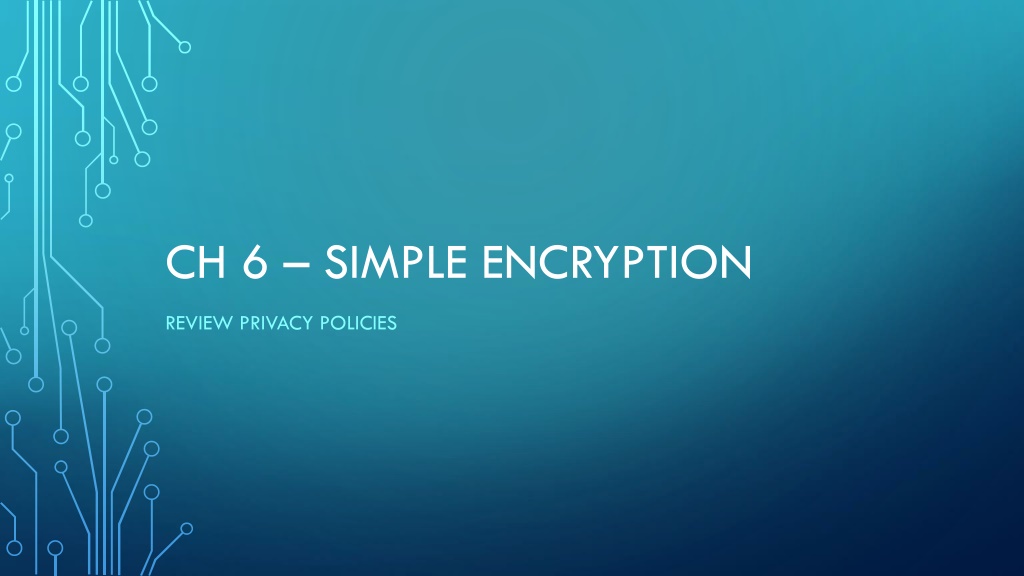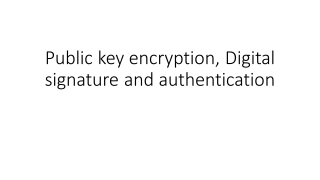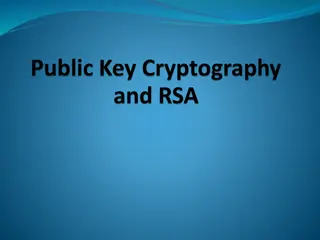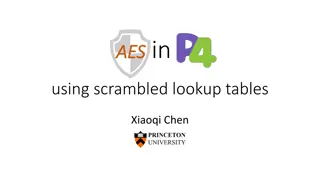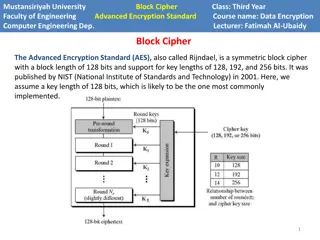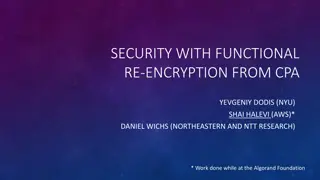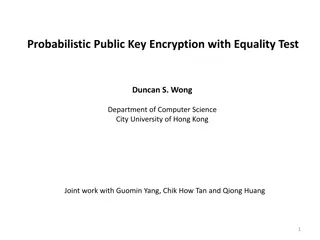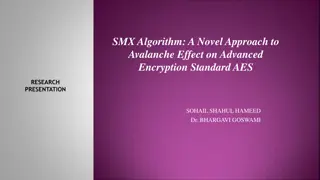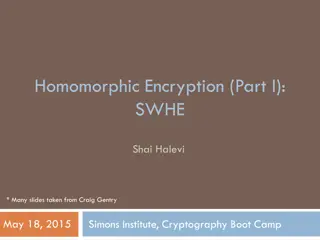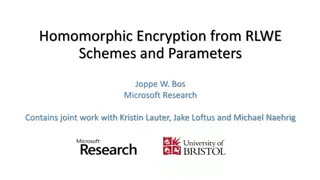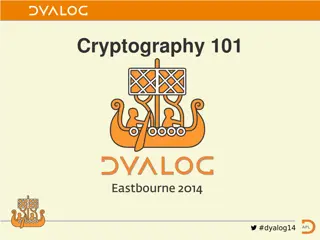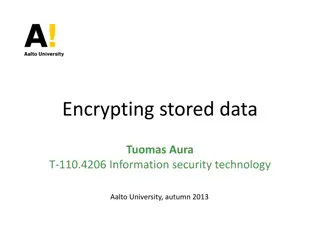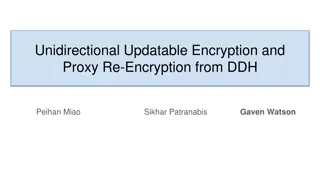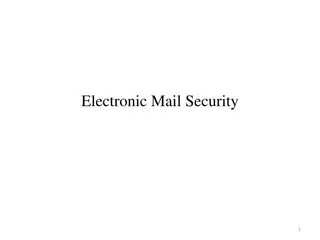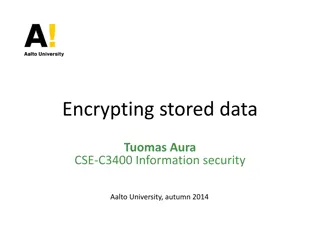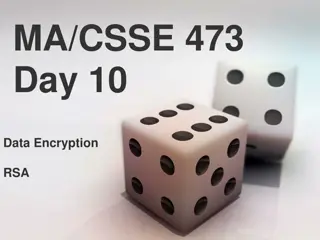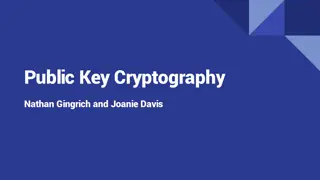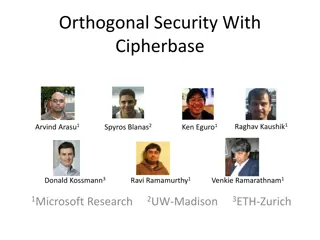Encryption and its Importance in Everyday Life
Encryption is a crucial process that transforms messages into secret codes, ensuring only intended recipients can decipher them. This review delves into the significance of encryption for online activities, cracking different cipher methods, and recognizing security flaws. Discover how computational tools enhance encryption complexity while also amplifying decryption abilities.
Download Presentation

Please find below an Image/Link to download the presentation.
The content on the website is provided AS IS for your information and personal use only. It may not be sold, licensed, or shared on other websites without obtaining consent from the author.If you encounter any issues during the download, it is possible that the publisher has removed the file from their server.
You are allowed to download the files provided on this website for personal or commercial use, subject to the condition that they are used lawfully. All files are the property of their respective owners.
The content on the website is provided AS IS for your information and personal use only. It may not be sold, licensed, or shared on other websites without obtaining consent from the author.
E N D
Presentation Transcript
CH 6 SIMPLE ENCRYPTION REVIEW PRIVACY POLICIES
OBJECTIVES: I WILL BE ABLE TO Explain why encryption is an important need for everyday life on the Internet. Crack a message encrypted with a Caesar cipher using a Caesar Cipher Widget Crack a message encrypted with random substitution using Frequency Analysis Explain the weaknesses and security flaws of substitution ciphers
WHAT IS ENCRYPTION? Encryption is a process - an algorithm - for transforming a message so that the original message is hidden from anyone who is not the intended recipient. This is often called a secret code. Reversing the encryption process to reveal the original message is called decryption. Encryption is not just for the military and spies anymore. We use encryption everyday on the Internet, primarily to conduct commercial transactions, and without it our economy might grind to a halt.
VOCABULARY Encryption - a process of encoding messages to keep them secret, so only "authorized" parties can read it. Decryption - a process that reverses encryption, taking a secret message and reproducing the original plain text Cipher - the generic term for a technique (or algorithm) that performs encryption
VOCAB PART DEUX Caesar Cipher - a technique for encryption that shifts the alphabet by some number of characters Random Substitution Cipher - an encryption technique that maps each letter of the alphabet to a randomly chosen other letter of the alphabet. Cracking encryption - When you attempt to decode a secret message without knowing all the specifics of the cipher, you are trying to "crack" the encryption.
HOW DOES THIS WORK? Computational tools dramatically increase the strength and complexity of the algorithms we use to encrypt information, but these same tools also increase our ability to crack an encryption. Developing strong encryption relies on knowledge of problems that are hard for computers to solve, and using that knowledge to encrypt messages.
THE CAESAR CIPHER Decode: serr cvmmn va gur pnsrgrevn free pizza in the cafeteria each letter shifted 13 characters Code studio widget Caeser Cipher
RANDOM SUBSTITUTION WIDGET Continue with lesson 5
HOMEWORK Read Ch 5 in Blown to Bits: link in unit 4 lesson 5
